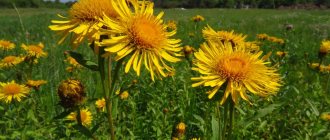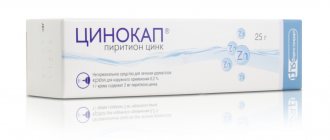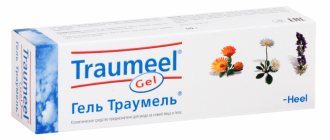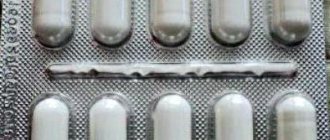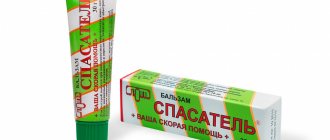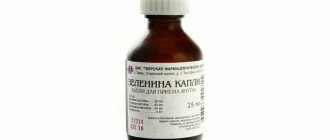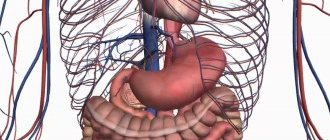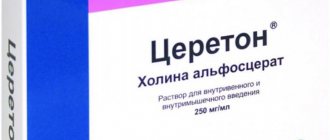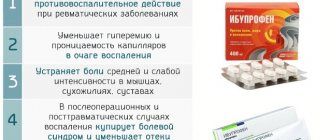Active ingredients
- Not indicated. See instructions
Pharmacological action
- Not indicated. See instructions
- Composition of Valerian P
- Indications for use of the drug Valerian P
- Valerian P release form
- Contraindications to the use of the drug Valerian P
- Method of administration and dosage of the drug Valerian P
- Storage conditions for the drug Valerian P
- Shelf life of Valerian P
Valerian P - the secret of strong nerves and healthy sleep
Valerian is the most studied medicinal plant, included in the state pharmacopoeias of many European countries more than two centuries ago.
In terms of effectiveness, it can compete with sedatives with benzodiazepines and barbiturates. Few people know, but products with valerian can also vary in effectiveness. We present the drug Valerian P, which today has no equal. And not only because the effect of the plant is enhanced by vitamin C. The main advantage is that the drug contains all the substances of the plant, and not its “reduced” composition, as is the case in extracts. This was achieved thanks to patented cryoprocessing technology. Let us list the main properties of Valerian P:
- calms and relieves nervous tension;
- normalizes sleep;
- reduces feelings of anxiety and fear;
- eliminates muscle spasms;
- normalizes the functioning of the cardiovascular system;
- has choleretic properties;
- has anthelmintic properties.
Valerian P: calms, relieves nervous tension, protects nerve cells from destruction
According to statistics, about 70% of Russians are constantly under stress, and a third are subjected to severe stress regularly. The result is growing health problems.
To relieve symptoms of nervous anxiety, they often resort to the help of antidepressants - drugs based on benzodiazepines and barbiturates. However, drugs from these groups cause drug dependence: barbiturates - in the third month of regular use, benzodiazepines - after a week. In addition, we must remember that the list of side effects from synthetic sedatives is very impressive. This is the development of aggression, even greater irritability, suicidal behavior, loss of libido, etc.
However, a number of studies show that valerian officinalis can be a worthy alternative to synthetic sedatives. Moreover, the plant does not cause addiction or adverse health effects.
For example, in 1999, scientist KJ Kemper concluded that valerian has a sedative effect similar to that of barbiturates (published in The Longwood Herbal Task) [1]. In addition, valepotriates contained in the root of the plant in rodents weakened the symptoms of “diazepam” addiction (“Diazepam” is a representative of the class of benzodiazepines) and caused an anticonvulsant effect.
A group of Indian scientists led by D. Bhattacharyya stated that valerian increases resistance to stress and reduces symptoms of anxiety and depression based on a study involving 33 people [2]. Patients under stress received 500 mg of valerian 2 times a day for 60 days. Before the start of the experiment, a month later, and upon completion, the subjects underwent psychological testing. It is important that the subjects did not experience memory or concentration problems, no drowsiness during the day, no decrease in performance, and no deterioration in mood) - a side effect of long-term use of synthetic sedatives.
In 2004, the neuroprotective properties of valerian were established. Specialists from the Institute of Biochemistry from the University of Coimbra (Portugal) JO Malva, S. Santos, T. Macedo exposed rat hippocampal neurons to a toxic substance, which is a key factor in the development of Alzheimer’s disease, for 24-48 hours [3]. Some of these cells were also treated with valerian. After this, the morphological and biochemical properties of nerve cells were assessed. It turned out that those of them that were treated with valerian avoided destruction. Scientists are convinced that the discovered property of the plant can be used for the prevention and treatment of neurodegenerative disorders, including age-related ones.
Similar results were obtained by specialists from the Federal University of Baghia (Brazil) DM de Oliveria, G. Barreto and colleagues [4]. Scientists have shown the protective effect of valerian officinalis on nerve cells in Parkinson's disease.
The sedative properties of valerian are mainly due to the presence of valepotriate esters in the plant. These are extremely capricious compounds that are instantly destroyed by any attempt to extract them from plant materials. However, the manufacturer of Valerian P managed to solve this difficult problem. Valerian roots were exposed to ultra-low temperatures (-175°) and then ground into powder. Valepotriates are completely preserved, and with them the medicinal properties of the plant.
The calming effect of valepotriates increases under the influence of the components of the essential oil of the plant - isovaleric acid, borneol, alkaloids valerine and chatinine. Many researchers agree that the plant’s compounds mutually enhance each other’s medicinal properties, and therefore it is impossible to single out the main active ingredient among them and extract it: valerian will lose its potency.
Valerian P contains the whole root of the plant, in which all its nutrients are fully preserved.
Possible side effects and contraindications of Valerian P
Both the active substance and the drug Valerian P itself are considered quite safe if the instructions for use are followed. Valerian has no known severe side effects, there are no strict contraindications for it, therefore, the drug based on it also does not cause severe side effects.
Crushed valerian root as a component of medicines in folk medicine is not prescribed only to children under 3 years of age and breastfeeding mothers.
However, there are some cautions regarding the use of the product. In particular:
- Valerian P should not be taken if symptoms of an allergy to the drug appear;
- The product should not be taken for more than 2 weeks without a break, since long-term use can lead to disturbances in the functioning of the digestive tract, disturbances in the functioning of the heart, and headaches;
- The drug should not be used independently without consulting a doctor if, in parallel with neurological symptoms, somatic symptoms develop - pain in the head, stomach, spasms, convulsions, dizziness, nausea, etc. In these cases, the deterioration of the patient’s condition can increase like an avalanche and attempts to cope with the disease on their own and with the help of folk remedies will only lead to a loss of time and aggravation of the disease;
- The product should not be taken before the need to drive vehicles or dangerous machinery, or perform responsible and precise work.
It has also been shown that for approximately 5% of people, both valerian, and, therefore, Valerian P based on it, are, on the contrary, stimulating stimulants, leading to sleep disturbances, stimulation of motor activity and intensification of the work of internal organs. Therefore, if after taking Valerian P the effects that the patient expected do not appear, there is no point in continuing to take the drug.
Normalizes sleep
The duration of our sleep and health are closely interrelated, and there is a lot of scientific evidence for this. Disturbances in the sleep-wake cycle negatively affect life expectancy and can cause irritability, stress, depression, Alzheimer's disease, mental and neurological disorders, cardiovascular diseases, and diabetes.
In the treatment of insomnia, drugs from the groups of benzodiazepines, ethanolamines, cyclopyrrolones, and antidepressants are used. All of them have serious side effects. Their abolition causes significant difficulties. The same cannot be said about valerian officinalis, which forms the basis of Valerian P. There are a lot of scientific works proving the effectiveness and safety of using the plant in the treatment of sleep disorders. It has been noted that the main effect of valerian in the treatment of insomnia is cumulative and appears after 2-4 weeks of daily use. This effect is most pronounced in those suffering from insomnia, less so in healthy people (DA Diaper, I. Hindmarch, 2004 [5]).
In 2006, specialists from the University of California (S. Bent and colleagues) organized a meta-analysis of 16 randomized placebo-controlled trials involving 1093 patients [6]. It has been found that valerian preparations improve the quality of sleep in patients suffering from insomnia, without causing any side effects.
In 2007, Japanese scientists from the Okayama Higher School of Medicine S. Tokunaga, Y. Takeda and like-minded people in an experiment on laboratory rats proved that taking valerian helps reduce the time it takes to fall asleep, improves the quality and duration of sleep [7].
In the treatment of insomnia, drugs of the benzodiazepine group based on oxazepam (Tazepam, Vaben, Nozepam) are often used. They quickly relieve sleep disturbances, but at the same time cause personality changes, indifference to everything that happens around them, and deprive a person of the ability to adequately respond to events. It is not recommended to take them for longer than 0.5-1 month due to the possibility of developing drug dependence. The results of experimental work by a specialist at the Institute for Psychomatic Research (Germany) G. Zeigler and colleagues in 2002 showed that oxazepam may well compete with valerian preparations in the effectiveness of treating non-organic sleep disorders [8]. Moreover, the effectiveness of the latter is 7% higher than that of a synthetic substance, and there are practically no side effects.
The ability of valerian to favorably influence sleep is also explained by the combined action of valepotriates, borneol, isovaleric acid and alkaloids - hotenin and valerine.
Instructions for use
The normal amount of Valerian P to take is 2-3 tablets 3 times a day with meals. The product is taken only when necessary. If there are no symptoms requiring reassurance, and there is no obvious danger of their development, the remedy should not be taken.
It is not advisable to give Valerian P to children. As directed by a doctor, it may be allowed in smaller doses for children over 7 years of age, but in fact there is no need for the child to take it.
The drug should also be discontinued once symptoms of anxiety or neurological disorders cease to manifest. In any case, it is prohibited to take the drug for more than 2 weeks in a row. If the symptoms that you are trying to get rid of with the help of the drug last longer, you need to consult a doctor and begin full treatment.
Instructions for use of the drug are on the bottle itself.
As a result, Valerian P should be considered as a dietary supplement, which helps to somewhat reduce the manifestations of random stress and anxiety, and is also useful in addition to the full treatment of neurological diseases. It is impossible to treat serious illnesses with it in order to avoid going to the doctor, but if the doctor prescribes this remedy after diagnosis, it may well be useful.
Relieves muscle spasms
The Italian botanist, one of the first members of the Italian Academy of Sciences, Fabio Colonna, reported back in 1592 that the use of powdered valerian root allowed him to completely get rid of epilepsy [9]. This disease manifests itself as convulsions - short-term, frequent muscle spasms that do not depend on a person’s will.
In 2004, an Australian scientist from the University of Queensland and the Royal Brisbane Hospital, MJ Eadie, set out to evaluate the available evidence that valerian has an anticonvulsant effect. It was found that isovaleric acid contained in the plant acts similarly to valproic acid, a substance used to eliminate seizures in epilepsy [10]. It can also prevent sudden and involuntary muscle contractions. However, it acts more gently and safely. In addition, valepotriates exhibit an antispasmodic effect.
It may seem counterintuitive, but valproic acid was created in the late 19th century as an analogue of valeric acid, also present in valerian. Only the purpose of its production at that time was not the treatment of epilepsy, but the dissolution of organic compounds. The anticonvulsant properties of the substance were discovered completely by accident 80 (!) years later. Since then, it has been the most popular antiepileptic drug throughout the world. However, its safety leaves much to be desired. It has been proven that valproic acid can cause such severe disorders as liver failure, fatal toxic hepatitis, acute pancreatitis, dementia with brain atrophy, dysfunction of endocrine and reproductive organs and other pathologies (M. Z. Karkashadze, V. M. Studenikin, O. I. Maslova and others, Scientific Center for Children’s Health, Russian Academy of Medical Sciences) [11].
In 1980, Holm and colleagues demonstrated in experiments with cats that valerian can reduce muscle tone in animals by 30-40% [12].
In 2010, a group of specialists from Rafsanjan University of Medical Sciences (Iran) led by ME Rezvani experimentally (on rats) also confirmed the antispasmodic effect of valerian [13]. It extends not only to skeletal (striated) muscles, but also to the smooth muscles of hollow internal organs (stomach, intestines, uterus, heart, gall and bladder) and the walls of lymphatic and blood vessels.
Relieves feelings of anxiety, fear, obsessive thoughts (anxiolytic effect)
Modern scientists associate the occurrence of anxiety disorders with a disorder in the metabolism of gamma-aminobutyric acid (GABA). This amino acid, being an inhibitory neurotransmitter, dampens excessive activity of the nervous system. When it is released into the gap between nerve cells (synaptic cleft), through which an electrical impulse passes, the latter is suppressed. Anxiety subsides.
GABA is continuously produced and utilized in the brain. There are two ways to increase its quantity: to promote production or to slow down destruction. Valerian officinalis uses both of these methods: it causes the release of GABA from the nerve endings of the brain, and then blocks its return to nerve cells. How does she do this?
On the one hand, the plant contains:
- valerenic acid, which can bind to and activate GABA receptors (CS Yuan, S. Mehendale, Y. Xiao and others, University of Chicago, Tang Herbal Medicine Research Center) [14];
- flavonoids that improve GABA signal transmission;
- GABA itself (according to E. L. Malankina - Doctor of Agricultural Sciences, Professor of the Department of Botany of the Russian State Agrarian University Moscow Agricultural Academy named after K. A. Timiryazev) [15].
On the other hand, valerenic acid inhibits the enzyme (GABA transferase) that breaks down GABA.
In 2002, specialists from the Federal University of Parana (Brazil) organized a controlled pilot study involving 36 people suffering from generalized anxiety disorder [16]. The patients were divided into 3 groups, 12 people in each. The subjects from the first group took medicinal valerian for 4 weeks, from the second - Diazepam (a synthetic anti-anxiety drug), from the third - dummy tablets (placebo). Only in the first and second groups there was a significant decrease in the severity of the anxiety syndrome (assessed using the Hamilton scale). It was concluded that the components of valerian are capable of exerting a pronounced anxiolytic effect, similar to tranquilizers.
Normalizes the functioning of the cardiovascular system
According to American researchers, 2/3 of all calls for medical help are caused by symptoms caused by stress. In 2012, the authoritative journal The Lancet published data showing that emotional stress increases the risk of heart attack by an average of 23% [17]. And experts from the University of Sydney found that after an outburst of anger, this risk remains increased by 9 times for 2 hours [18].
On the World Wide Web you can find reports about the beneficial effects of valerian officinalis on the functioning of the cardiovascular system.
Here is one of them: “I have had hypertension for more than 15 years, coronary artery disease, angina pectoris, arrhythmia. A neighbor advised me to just sniff valerian tincture at least twice a day for 10 minutes. Once at night, before bed. I started doing this. After just three weeks, my condition improved noticeably. I have been doing this procedure for more than three years. Heart pain became less frequent and easier. Heart rate returned to normal. Cardiograms have improved. The pressure does not exceed 200 even on the days of the strongest magnetic storms, before snow and rain (I am a barometer man). It became possible to go to the grocery store, but previously I couldn’t carry a bag weighing 2 kg home. An angina attack began. I’ve been without other heart medications for two years now.” How do scientists explain such effects?
If you believe the authoritative directory of medicinal plants VIDAL, published almost all over the world, valerian officinalis has both direct and indirect effects on the activity of the cardiovascular system. The plant contains borneol. This substance from the group of terpenes affects myocardial vessels, prevents their narrowing, lowers blood pressure and improves blood circulation in the heart muscle. In addition, it relieves heart spasms and slows down the rhythm of its contractions. Valerian glycosides also have a vasodilating and hypotensive effect. And the plant’s saponins are responsible for its cardioprotective properties.
Valerian also regulates the functioning of the heart and blood vessels through the central nervous system. The fact is that during nervous shocks, the stress hormone adrenaline is released into the blood. It causes blood vessels to narrow, which leads to increased blood pressure, increased heart rate and the development of arrhythmia. The plant, by removing excessive overexcitation of the nervous system, prevents all these processes and facilitates the work of the heart muscle. To achieve a noticeable effect, regular and long-term course use of the roots of valerian officinalis or a preparation based on them, Valerian P., is necessary. Moreover, inhalation of the essential oils of the plant has a similar effect to oral administration (I. D. Karomatov, D. I. Rakhmatova, 2016 [19] ), and therefore you can simply open a jar of pills and put it at the head of the bed at night.
S. Ya. Sokolov (1987) [20] and XY Duan (2009) [21] report that valerian officinalis exhibits antiarrhythmic properties, gently increasing or decreasing the heart rate.
As you know, stress is often a provoking factor for high blood pressure and rapid heartbeat. A group of specialists from the University of Surrey (Guildford, UK) led by M. Cropley in 2002 proved that if you take valerian during a stressful situation, these pathologies do not appear [22].
Product effectiveness
Valerian P is not able to influence the cause of any disease related to the indications for its use. Consequently, it is a symptomatic remedy, with the help of which the patient’s condition is only alleviated to one degree or another. It is impossible to treat serious pathologies with it alone.
In general, Valerian P can be used for conditions that resolve on their own without the use of other remedies. In these cases, the main result of using the drug is faster relief of unwanted symptoms.
In most cases, valerian is used in addition to other medications for nervous diseases, complementing their effect.
Also, in some cases, symptoms that are eliminated or alleviated by Valerian P are a kind of catalyst for the disease. They aggravate the patient’s nervous tension, increase anxiety and stress, which leads to a constant increase in the severity of the disease and its intensification. If these symptoms are extinguished by valerian, the nervous pathology gradually ends without anxiety and stress, especially when treated with other targeted drugs.
As a result, Valerian P is truly effective and can be used in two cases:
- There is no disease, but there are some neurological symptoms that worsen the patient’s condition and go away on their own over time. The drug only speeds up their completion;
- The patient has a serious neurological disease that is treated with targeted drugs, and Valerian P is used in addition to correct and reduce symptoms.
It is also useful to read: When valerian tablets will be useful and when they will cause harm
At a minimum, this means that if a person feels that his overall health is good, but due to some shock or overload his condition worsens, then he can take a drug to calm and relax. If he has a serious illness that has been going on for quite a long time and manifests itself with constantly severe and even more progressive symptoms, he can drink Valerian P only after examination by a doctor and the prescription of this remedy by the doctor himself.
Has bile-forming and choleretic properties
Valerian officinalis combines choleretic and cholespasmolytic properties (Skakun N.P., Pasechnik N.Kh. “On the choleretic effect of preparations of valerian officinalis and Leuzea safflower,” 1960) [23]. Simply put, the plant increases the secretion of bile and promotes its outflow into the duodenum.
The bile-forming effect is achieved by increasing the proportion of water in the composition of bile and reducing the viscosity of the latter. Absorbed in the gastrointestinal tract, valerian mineral salts are secreted by liver cells into primary bile, creating increased osmotic movement in the bile capillaries of the liver, and contribute to an increase in the water component of bile. In addition, herbal components reduce the reabsorption of water and electrolytes in the gallbladder and biliary tract, which also significantly reduces the viscosity of bile. As a result, bile excretion is facilitated and the formation of stones in the gall bladder is prevented (D.M.S., Professor V.I. Simanenkov, Ph.D. E.A. Lutaenko) [24].
The cholespasmolytic effect of valerian is to relax the tone of the bile ducts, eliminate spasms, improve the outflow of bile, and relieve pain (see above for the antispasmodic effect of valerian on smooth muscles).
Gets rid of helminths
Experts say that more than 90% of people around the world are infected with one or another parasite. Helminths interfere with the normal functioning of internal organs and provoke the development of a large number of concomitant diseases. It is impossible to get rid of them in a short time, and long-term use of synthetic anthelmintic drugs is dangerous for human health, since such drugs, according to Academician K. I. Scriabin, “are poisons not only for the parasite, but also for its owner” [25]. Another scientist, Professor V.A. Charushin, reported at the beginning of the last century: “After the use of anthelmintic drugs, complications may exceed the consequences of the parasitic infection itself.” The professor recommended giving preference to herbal remedies in the fight against helminthic infestations [26].
One of these remedies is valerian officinalis. The antihelminthic properties of the plant were described in the works of the Bulgarian herbalist P. Nikolov back in the middle of the last century (1949) [27]. Later (1972), V.I. Zavrazhnov, R.I. Kitaeva and K.F. Khmelev reported that valerian rhizomes are effective as an anthelmintic for tapeworm infestation [28].
The main active ingredients that provide the anthelmintic properties of the plant are strong phytochemical compounds with a bitter taste - iridoids. Valerian contains two types of them - valepotriates and alkaloids. All of them are carefully preserved in the Valerian P preparation thanks to the use of cryoprocessing technology.
Indications for use
The main area of application of Valerian P is various nervous shocks, agitation, anxiety states and associated consequences - insomnia, depression, hysteria, obsessive thoughts, somatic diseases that develop on nervous grounds.
For insomnia, valerian helps with long-term continuous use.
As the main treatment, Valerian P is not used for any diagnosed disease. It can be used independently only for minor temporary disorders - anxiety, agitation, mild sleep disturbances, severe menopause. In these cases, the drug helps to normalize the patient’s condition and either completely or partially relieves unwanted symptoms.
In most other cases, Valerian P is used as an adjuvant as part of complex therapy. So it is used for:
- Panic attacks, random panic attacks;
- Hysterical;
- Treatment of severe nervous disorders accompanied by restlessness, anxiety, fear;
- Insomnia, severe sleep disorders;
- Diseases of the digestive tract that have developed due to nervousness;
- Neurodermatitis;
- Migraines, headaches due to constant nerve tension;
- Various neuroses;
- Epilepsy;
- Various spasms (intestinal muscles, facial muscles), convulsions;
- Hysteria;
- Increased heart rate, hypertension.
For all these indications, Valerian P acts due to its sedative and relaxing effect.
Thanks to other actions, the drug is used as a prophylactic for:
- Liver diseases (by increasing secretory activity, it helps remove excess inflammatory products and toxins from the liver);
- Diseases of the biliary tract and bile deficiency;
- Obesity and intensive weight loss - the drug reduces the feeling of hunger;
- Diseases of the urinary system.
However, the drug cannot be taken continuously either for therapeutic or prophylactic purposes, and therefore it can only be taken if there are clear signs of the disease or a high probability of developing a particular syndrome.
Advantages of Valerian P over other plant preparations
There are a great variety of medications containing valerian officinalis on the shelves of modern pharmacies. How does Valeriana P compare favorably with them?
- Processing of plant raw materials is carried out using innovative cryoprocessing technology, which makes it possible to preserve all, even the most capricious, compounds of the roots and rhizomes of valerian (and, therefore, the medicinal properties of the plant), and also ensures better absorption of the active substances of the plant.
- Valerian P is distinguished by a high content of active ingredients of valerian - 56 mg. For comparison, “Valerian extract” (Evalar) contains only 20 mg of extract from the plant.
- Valerian P contains all the richness of the plant's compounds, since the manufacturer refused to use extracts. The preparation contains whole, powdered valerian root. The same cryotreatment allows you to get rid of bacteria.
- The manufacturer uses plant raw materials grown on its own agricultural lands, which allows complete control of the entire process - from planting to tableting and packaging.
- Valerian P contains no sugar, and therefore the drug can be used by people suffering from diabetes.
- The inclusion of vitamin C (10 mg) in Valerian P helps restore the body from the effects of stress, protect it from free radical damage, and increase immunity. The synergistic effect in combination with vitamin C, which is a powerful antioxidant, is also important.
- Valerian P is a long-acting drug. Due to the preservation of all biologically active substances, the effect of taking the product lasts longer.
Many contemporaries, despairing of overcoming stress with safe herbal remedies based on herbal extracts, prefer to resort to the help of potent synthetic agents. And in vain. Natural, centuries-tested remedies still work, but only when they are properly prepared and contain the entire complex of biologically active substances, like Valerian P.
Best before date
36 months
Vitamins with similar effects
- Yoshi Vitamin Jelly Drink (vitamin complex) (Liquid for oral administration)
- Pantohematogen "Altamar™-4" (Oral tablets)
- Oculist blueberry (Oral tablets)
- Progaine, strawberry flavor (Powder for oral solution)
- Orthomol Vital F (granules) (Capsule)
- Goal T (Ointment for local and external use)
- Gripp-Heel (Aerosol)
The description of vitamin Valerian P is intended for informational purposes only. Before starting to use any drug, it is recommended to consult a doctor and read the instructions for use. For more complete information, please refer to the manufacturer's instructions. Do not self-medicate; EUROLAB is not responsible for the consequences caused by the use of information posted on the portal. Any information on the project does not replace consultation with a specialist and cannot be a guarantee of the positive effect of the drug you use. The opinions of EUROLAB portal users may not coincide with the opinions of the site Administration.
Are you interested in Vitamin Valerian P? Do you want to know more detailed information or do you need a doctor's examination? Or do you need an inspection? You can make an appointment with a doctor - the Euro lab is always at your service! The best doctors will examine you, advise you, provide the necessary assistance and make a diagnosis. You can also call a doctor at home . Euro lab clinic is open for you around the clock.
Attention! The information presented in the vitamins and dietary supplements section is intended for informational purposes and should not be a basis for self-medication. Some of the drugs have a number of contraindications. Patients need to consult a specialist!
If you are interested in any other vitamins, vitamin-mineral complexes or dietary supplements, their descriptions and instructions for use, their analogues, information about the composition and form of release, indications for use and side effects, methods of use, dosages and contraindications, notes about the prescription of the drug for children, newborns and pregnant women, price and consumer reviews, or you have any other questions and suggestions - write to us, we will definitely try to help you.
Bibliography
- Kemper KJ Valerian (Valeriana officinalis) // Longwood Herbal Task Force. – 1999. – 25 p.
- Bhattacharyya D., Sur TK, Jana U., Debnath PK Controlled programmed trial of Ocimum sanctum leaf on generalized anxiety disorders // Nepal Medical College Journal. 2008. Vol. 10 (3). P. 176–179.
- Malva JO, Santos S., Macedo T. Neuroprotective properties of Valeriana officinalis extracts // Neurotoxicity Research. 2004. Vol. 6 (2). P. 131–140.
- De Oliveria DM, Barreto G., De Andrade DV, Saraceno E., Aon-Bertolino L., Capani F., Dos Santos E. l. Bachá R., Giraldez LD Cytoprotective effect of Valeriana officinalis extract on an in vitro experimental model of Parkinson disease // Neurochemical Research. 2009. Vol. 34(2). P. 215–220.
- Diaper A., Hindmarch I. A double-blind, placebo-controlled investigation of the effects of two doses of a valerian preparation on the sleep, cognitive and psychomotor function of sleepdisturbed older adults // Phytotherapy Research. 2004. Vol. 18. P. 831–836.
- Bent S., Padula A., Moore D., Patterson M., Mehling W. Valerian for sleep: a systematic review and meta-analysis // American Journal of Medicine. 2006. Vol. 119(12). P. 1005–1012.
- Tokunaga S., Takeda Y., Niimoto T., Nishida N., Kubo T., Ohno T., Matsuura Y., Kawahara Y., Shinomiya K., Kamei C. Effect of valerian extract preparation (BIM) on the sleep -wake cycle in rats // Biological & Pharmaceutical Bulletin. 2007. Vol. 30(2). P. 363–366.
- Ziegler G., Ploch M., Miettinen-Baumann A., Collet W. Efficacy and tolerability of valerian extract LI 156 compared with oxazepam in the treatment of non-organic insomnia a randomized, double-blind, comparative clinical study // European journal of medical research. 2002. Vol. 7 (11). P. 480–486.
- Colonna F. Phytobasanos. – Neapoli: Iacobum Carlinum & Antonium Pacem, 1592. – 32 pp.
- Eadie MJ Could valerian have been the first anticonvulsant? // Epilepsy. 2004. Vol. 45. P. 1338–1343.
- Karkashadze M. Z., Studenikin V. M., Maslova O. I., Bakanov M. I., Shelkovsky V. I., Balkanskaya S. V. Ideas about the side effects of valproic acid drugs in the treatment of epilepsy in children // Questions modern pediatrics. 2003. T. 2. No. 3. P. 43–49.
- Holm E., Kowollik H., Reinecke A., Henning von GE, Behne F., Scherer H.-D. Vergleichende neurophysiologische Untersuchungen mit Valtratum / Isovaltratum und Extractum Valerianae an Katzen // Die Medizinische Welt. 1980. Vol. 31, No. 26. P. 982–990.
- Rezvani M.E., Roohbakhsh A., Allahtavakoli M., Shamsizadeh A. Anticonvulsant effect of aqueous extract of Valeriana officinalis in amygdala-kindled rats: possible involvement of adenosine // Journal of Ethnopharmacology. 2010. Vol. 127(2). P. 313–318.
- Yuan CS, Mehendale S., Xiao Y., Aung HH, Xie J.-T., Ang-Lee MK The gamma-aminobutyric acidergic effects of valerian and valerenic acid on rat brainstem neuronal activity // Anesthesia & Analgesia. 2004. Vol. 98. P. 353–358.
- Malankina E. L. Use of valerian in official and folk medicine. URL: https://www.greeninfo.ru/grassy/valeriana_officinalis.html/Article/_/aID/5396 (access date: May 16, 2019).
- Andreatini R., Sartori VA Seabra MLV, Leite JR Effect of valepotriates (valerian extract) in generalized anxiety disorder: a randomized placebo-controlled pilot study // Phytotherapy Research. 2002. Vol. 16. P. 650–654.
- Kivimäki M., Nyberg ST, Batty GD, Fransson E., Heikkiä K., Alfredsson L., Bjorner JB, Borritz M., Burr H., Casini A., Clays E., De Bacquer D. et al. Job strain as a risk factor for coronary heart disease: a collaborative meta-analysis of individual participant data // The Lancet. 2012. 380 (9852). P. 1491–1497.
- Buckley T., Hoo SY, Fethney J., Shaw E., Hanson PS, Tofler GH Triggering of acute coronary occlusion by episodes of anger // European Heart Journal: Acute Cardiovascular Care. 2015. Vol. 4 (6). P. 493–498.
- Karomatov I. D., Rakhmatova D. I. Valerian officinalis and prospects for use in neurological and general medical practice: literature review // Biology and integrative medicine. 2016. No. 1. pp. 91–108.
- Sokolov S. Ya., Zamotaev I. P. Handbook of medicinal plants - M.: Medicine, 1987. - 512 p.
- Duan X.-Y., Gong Z.-F., Chen S.-H., Fang Y., Liu Y.-W. HPLC fingerprint of the antiarrhythmic fraction of Valeriana officinalis // Zhongyaocai. 2009. Vol. 32. P. 866–870.
- Cropley M., Cave Z., Ellis J., Middleton RW Effect of kava and valerian on human physiological and psychological responses to mental stress assessed under laboratory conditions // Phytotherapy Research. 2002. Vol. 16. P. 23–27.
- Skakun N. P., Pasechnik N. X. On the choleretic effect of drugs of valerian officinalis and Leuzea safflower // Proceedings of the Ternopil Medical Institute. 1960. T. 1. pp. 264–266.
- Simanenkov V. I., Lutaenko E. A. Methodological recommendations for the use of ursodeoxycholic acid (Urdox) in patients with biliary dyskinesia. – St. Petersburg. : Pharmproekt, 2010. – 28 p.
- Skryabin K.I., Shultz R.S. Fundamentals of general helminthology. – M.: Selkhozgiz, 1940. – 470 p.
- Charushin V.A. A short guide to helminthology: a textbook for doctors and students of medical and veterinary universities. – M.: Medgiz, 1931. – 360 p.
- Yordanov D., Nikolov P., Boychinov A. Herbal medicine. Treatment with medicinal herbs. – Sofia: Medicine and Physical Education, 1972 – 347 p.
- Zavrazhnov V.I., Kitaeva R.I., Khmelev K.F. Medicinal plants of the Central Black Earth Region. – Voronezh: VSU Publishing House, 1972. – 390 p.
